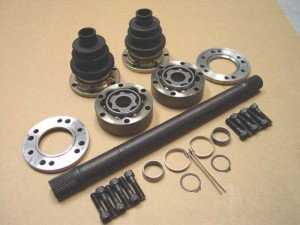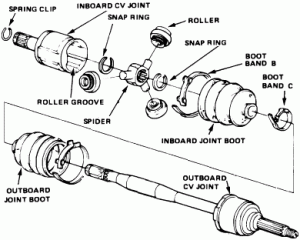 Recently a customer asked me some questions about CV Joints. It’s easy for those of us in the auto industry to take a lot of things that we know for granted and I am always willing to explain something to my customer if they are interested in knowing more about the workings of their car. Today’s questions are about CV Sharts, Axles, Boots & Joints.
Recently a customer asked me some questions about CV Joints. It’s easy for those of us in the auto industry to take a lot of things that we know for granted and I am always willing to explain something to my customer if they are interested in knowing more about the workings of their car. Today’s questions are about CV Sharts, Axles, Boots & Joints.
What are CV Joints?
CV or constant velocity joints are used on vehicles to connect the transmission or differential to the wheels of the car. If your car is front-wheel drive or rear-wheel drive, their are usually two CV axles on the car. If your car is four-wheel drive or all-wheel drive, their are usually four CV axles on the car.
CV Axles distribute the power from the engine and transmission to drive the wheels of the car.
The symptoms of a bad CV Joint can be a clicking noise while driving the vehicle around corners, or it can be a vibration felt throughout the whole car while driving. Some times customers complain of a burning smell, and this can happen when a CV joint boot breaks and the grease gets on the hot exhaust or brake system and burns. If a CV Joint fails completly, you can be stranded on the side of the road because the car will no longer be driveable.
The best way to maintain your CV joints is have them inspected on a regular basis. Ask your technician to take a look at them at every oil change or service. CV joint are usually not serviceable, unless your technician finds a small tear in the boot early enough and can install a CV boot repair kit. If they are bad, most often replacement is necessary and because they are usually inexpensive it makes sense to replace the whole CV axle.
If you live or work in the Summerville, SC area, bring your car in for an oil change and we’ll inspect your CV system to see if we notice any wear on your vehicle. Just give us a call at 851-2800 and schedule an appointment today. We look forward to serving you.
Happy Motoring,
